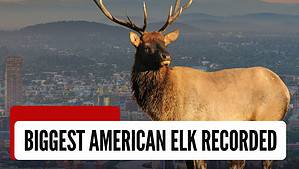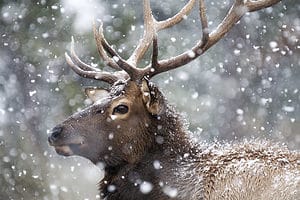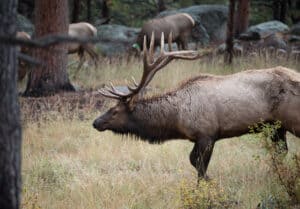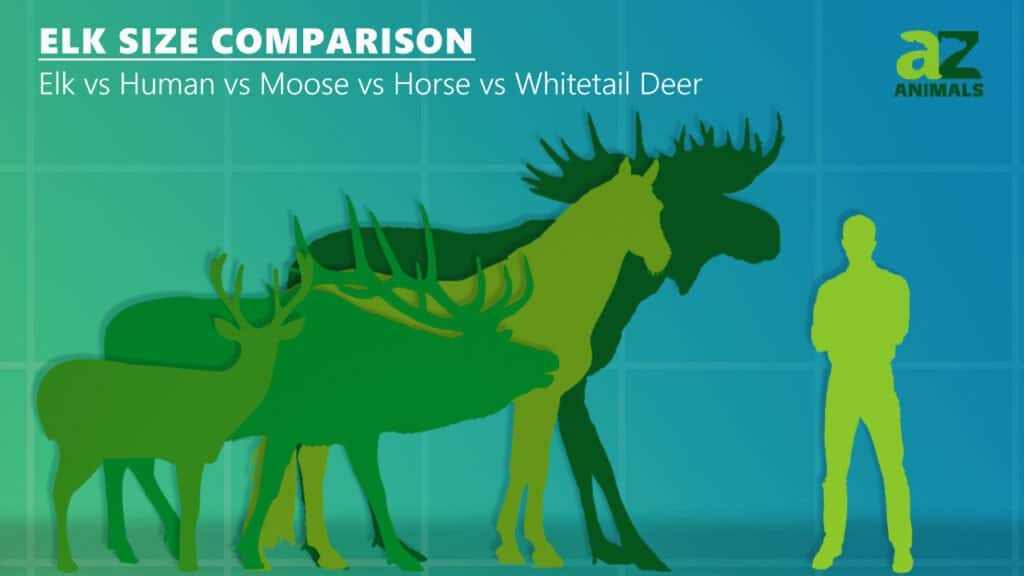
Have you ever wondered just how big an elk was in real life? This elk size comparison guide will answer that question and more!
Knowing how tall or heavy an animal is without seeing it for yourself can be hard. That’s why this guide is designed in a way to relate the size of an elk to everyday objects and even other animals like moose, horses, and deer.
So, interested in learning just how big an elk is? Keep reading to find out!
Types of Elk and Their Sizes
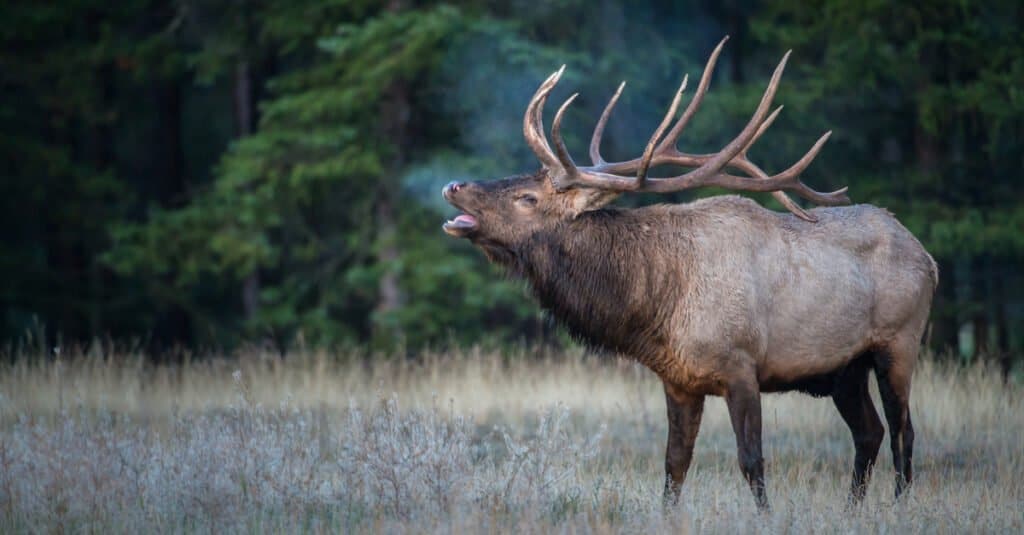
An adult elk can weigh more than half a ton.
©Ghost Bear/Shutterstock.com
Elk are one of the largest species of deer.
There are 12 subspecies of elk ranging across North America and Asia, although two – the eastern elk (Cervus canadensis canadensis) and the Merriam’s elk (Cervus canadensis merriami) – have gone extinct. Only four extant subspecies are found in North America. The remaining 11 subspecies are
- Alashan wapiti (C. c. alashanicus)
- Kansu red deer (C. c. kansuensis)
- Sichuan deer (C. c. macneilli)
- Manitoban elk (C. c. manitobensis)
- Tule elk (C. c. nannodes)
- Rocky Mountain elk (C. c. nelsoni)
- Roosevelt elk (C. c. roosevelti)
- Altai wapiti (C. c. sibiricus)
- Tian Shan wapiti (C. c. songaricus)
- Tibetan red deer (C. c. wallichii)
- Manchurian wapiti (C. c. xanthopygus).
The largest elk species is the Roosevelt elk, which can be found right here in the United States. Mature bulls (that’s what male elks are called) can weigh as much as 1200 pounds on average and can stand over 5 and a half feet tall at the shoulders. That’s taller than many people and doesn’t even include their impressive antlers!
The Alashan wapiti is the smallest elk alive, although there isn’t much research on them as of now. These elk live in remote regions of China. Also, while Alashan wapiti are the smallest subspecies of elk, they’re certainly still much bigger than most other species of deer!
Human Vs. Elk Size Comparison
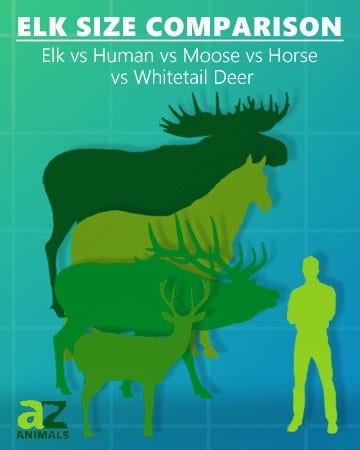
When it comes to animals in the deer family, people are usually surprised by just how big they are. While moose are usually the most surprisingly sized Cervidae (that’s the scientific name for the deer family), elk are larger in life too!
Let’s take the average American woman, who is 5’4”. She would be eye to eye with the elk’s shoulders, making it much taller than her when you consider its neck, head, and antlers, which on their own can be four feet tall.
When you’re measuring from foot to the tip of their antlers, elk can grow to be 9 feet tall. Even the average American male, who is 5 inches taller than his female counterpart, doesn’t even come close to measuring up to a full-grown adult elk. And, with the average American weighing anywhere from 150 to 200 pounds, an elk can be 8 times the size of an adult human. That’s an entire cabin camping tent worth of people.
If we were to look at an elk’s antlers alone, the results are surprising there too. At four feet tall, that’s the same as an elk carrying a typical eight-year-old on their head. Talk about a front-row seat!
Moose Vs. Elk Size
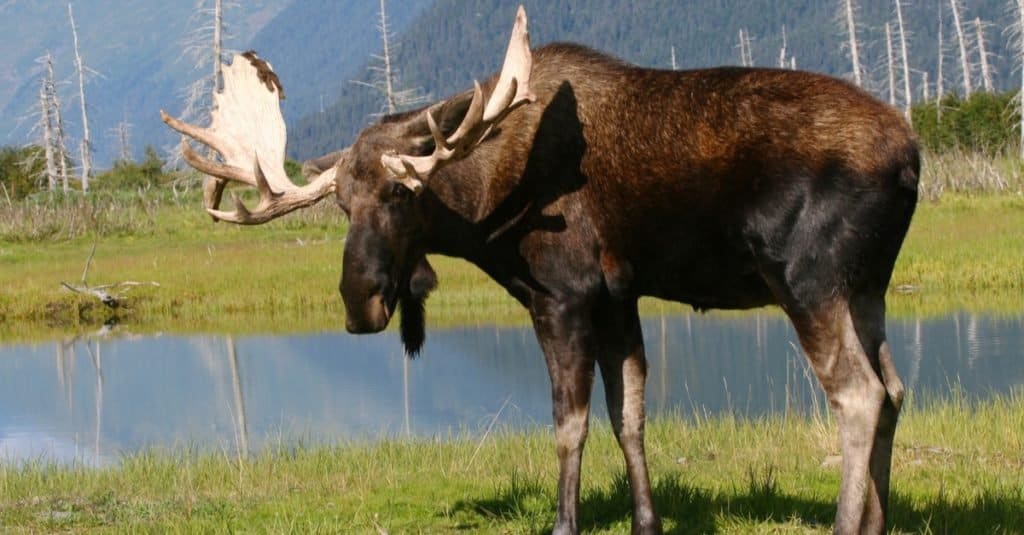
Moose are the largest type of deer.
©Steve Bower/Shutterstock.com
The largest deer, and one of the larger mammals found in North America, moose are known for their larger-than-life sizes. But how does it measure up to the elk?
While it’s close, as the largest deer out there, the moose has the elk beat this time.
At the shoulders alone, an adult moose can stand as tall as 6’9”. That’s taller than Michael Jordan, and much taller (nearly two feet taller!) than an elk. Plus, that doesn’t even include their antlers, which can be up to 50 inches wide compared to an elk’s 48 inches.
The moose wins over the elk when it comes to weight too. In fact, just their antlers weigh a whopping 40 pounds more – the same as 4 gallons of paint. And, when it comes to a comparison of their overall weight, a moose can weigh up to 300 pounds more than an elk. That difference is the same refrigerator! In this size comparison the moose tops the elk!
Horse Vs. Elk Size
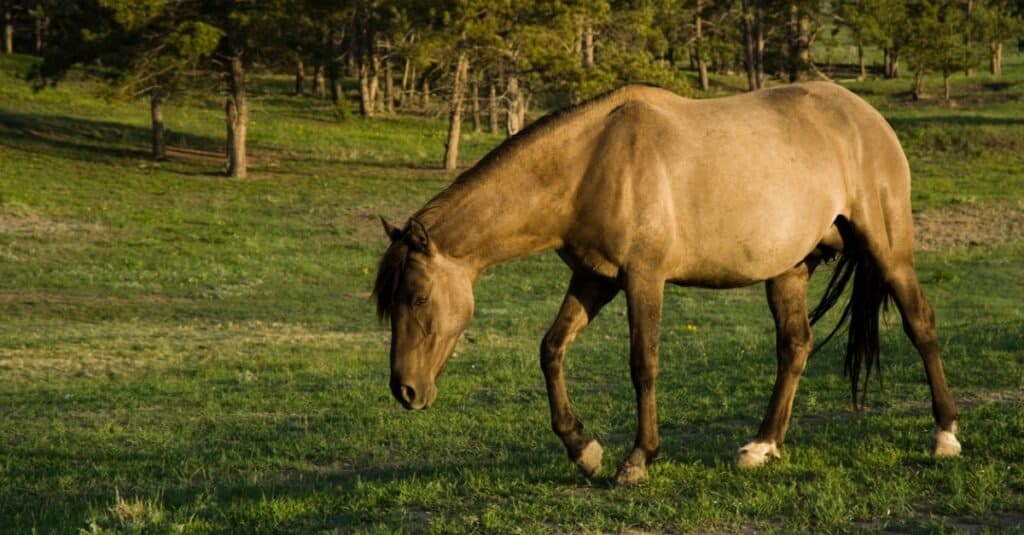
Horses are the domestic animal closest to elk in size and shape, though they’re not identical.
©iStock.com/karenparker2000
When it comes to deer, the closest domestic animal we have is the horse. And when it comes to the elk in particular, it’s a pretty accurate comparison.
Horses can stand anywhere from 4.8 to 5.7 feet at the shoulders, which places them right in the range of a fully grown adult elk. However, the largest horse ever recorded was a shire named Mammoth was over 7 feet, which is around a foot and a half taller than an elk.
Things can get a bit tricky when it comes to weight, though. The average horse only grows to weigh around 900 pounds at its heaviest, placing them at 200 pounds lighter than the smallest elk. However, Mammoth weighed well over 3000 pounds, making him more than double the weight of a Roosevelt elk and more than 50% larger than the largest moose on record.
As for their length, a horse and an elk are nearly identical with an average nose to tail length of around 8 feet. This means that the next time you’re standing beside a horse, you’ll have a good idea how long an elk is compared to you.
Whitetail Deer Vs. Elk Size
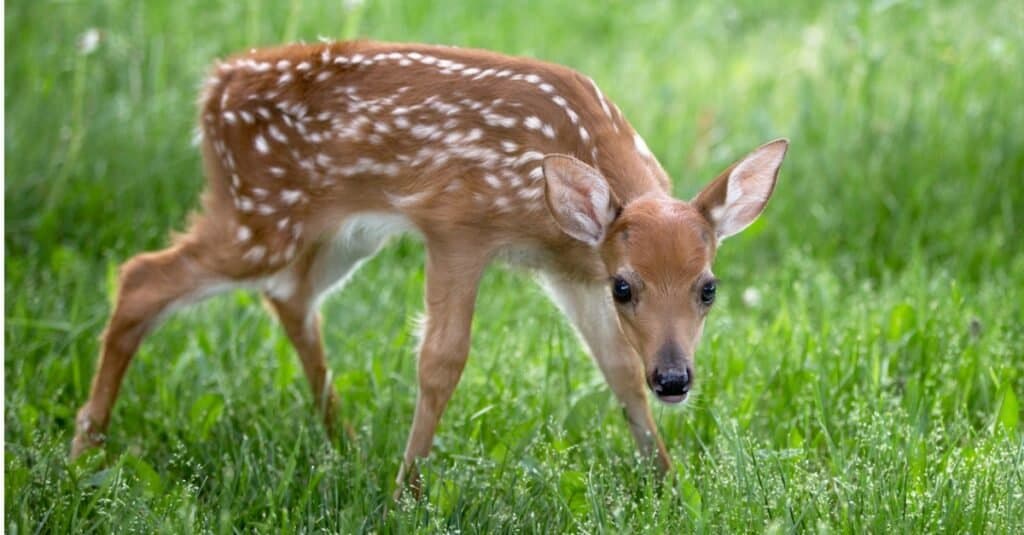
Whitetail deer are one of the most common deer – how do they measure up to an elk?
©iStock.com/Lynn_Bystrom
For those unfamiliar with deer, it can be a bit difficult to tell the difference between a whitetail deer and an elk. While there are a few defining differences, such as their fur or the shape of their head, another big factor is their size difference.
In fact, whether you’re looking at height or weight, the whitetail deer is just a fraction of the size of an elk.
The whitetail deer is one of the most common and abundantly found deer species in North America. They’re also some of the smallest in North America, though not the world. Once they reach maturity and are a full-grown adult, a whitetail deer will only measure at around 2.9 feet at the shoulders. That’s almost two feet shorter than an elk – the same height as a golden retriever!
As for weight, it can take as many as twelve whitetail deer to balance the scale with one elk. Talk about a bunch of deer!
The photo featured at the top of this post is © Mark A Lee/Shutterstock.com
Thank you for reading! Have some feedback for us? Contact the AZ Animals editorial team.




